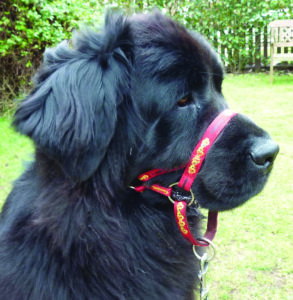Is A Collar Or A Headcollar Better For My Dog?
Every dog is different. That’s something we always hear, and it couldn’t be more true when choosing the right walking equipment for your dog. You’re not alone if you’ve wondered whether a collar or a headcollar is better.
It’s a common question for dog owners, especially when training, control, and comfort are all involved.
At Dogmatic, we design traditional collars and headcollars and understand that each offers unique benefits.
This guide will explain the differences, help you understand when and why each option might be best, and offer tips on choosing the right fit for your dog’s needs, age, and behaviour.
Understanding The Purpose Of Each
Let’s start with the basics. A standard collar sits around your dog’s neck and is typically used for attaching ID tags and leads.
It’s the go-to for many dog owners and works perfectly for dogs who walk nicely on a lead and don’t need much redirection or control.
Conversely, a headcollar fits around your dog’s muzzle and the back of their head, gently guiding the direction of their movement, similar to a headcollar used for horses.
It gives you more control over your dog’s head, which naturally influences where the body follows. Headcollars are especially helpful for training and managing dogs that tend to pull, lunge, or get distracted easily on walks.
So while both serve the purpose of helping you walk your dog safely, they do so in very different ways, and each shines in different situations.

When A Traditional Collar Works Best
A well-fitted collar is often all you need for dogs that are already lead trained, walk calmly by your side, and don’t show signs of pulling or lunging. It’s simple, convenient, and familiar.
Many dogs are introduced to flat collars as puppies, and with consistent positive reinforcement, they quickly learn to respond to cues and walk on a loose lead.
A collar is also ideal for day-to-day use, think popping out to the garden, attaching ID tags, or short walks around the block. Our Dogmatic collars are crafted to be both durable and comfortable, making them suitable for everyday wear while maintaining that classic, timeless look.
That said, a collar may not always be the most suitable choice for some dogs, especially those with sensitive necks or respiratory issues, particularly if they pull.
When A Headcollar Might Be The Better Choice
If your dog pulls firmly on the lead, reacts to other dogs or people, or gets easily overexcited, a headcollar can be a brilliant training aid. It allows for much greater control by gently guiding your dog’s head in your desired direction.
With consistent use and kind handling, headcollars can help transform a stressful, chaotic walk into a calmer, more enjoyable experience.
It’s important to remember that a headcollar isn’t about restricting your dog; it’s about communication.
At Dogmatic, our headcollars are designed not to ride up into your dog’s eyes or twist their neck. They sit securely and comfortably, helping you confidently lead while keeping your dog relaxed and focused.
Headcollars can also be helpful for larger or stronger dogs, particularly if the person walking them struggles with strength or mobility. That extra level of gentle control can make walks safer and more pleasant for everyone involved.

Factors To Consider When Choosing
So, how do you know which option is right for your dog? Start by thinking about their behaviour on the lead. A collar may be perfectly suitable if they’re generally calm and responsive. A headcollar might offer the guidance you need if they tend to pull, get distracted, or are still learning the ropes.
Also consider your dog’s age, size, and temperament. Puppies and young dogs often benefit from headcollars during early training, helping to establish good walking habits from the start.
Nervous or reactive dogs may also respond well to the added reassurance of a headcollar, especially in busy or unfamiliar environments.
Of course, comfort is key. Whatever option you choose should fit well, be easy to adjust, and be made from materials that are kind to your dog’s skin.
Dogmatic’s collars and headcollars are designed with your dog’s comfort in mind, whether you prefer the classic leather look or the lightweight feel of cushioned webbing.
Can You Use Both?
Absolutely. Many owners find that having both a collar and a headcollar gives them the flexibility to adapt to different situations. For a quick trip around the garden or a familiar route, a collar may be all that’s needed.
But a headcollar can offer extra support and control for longer walks, training sessions, or more stimulating environments.
Using a collar for ID tags while walking your dog with a headcollar is also fine.

Helping Your Dog Adjust
If you do decide to try a headcollar, it’s important to introduce it slowly and positively. Some dogs might find the feeling a bit strange at first, but with gentle encouragement, most adapt quickly. Start by letting your dog wear it indoors for short periods, reward them with treats and praise, and gradually build up to short walks.
We’ve put together a complete guide on getting your dog used to a headcollar [link to article], but the key takeaway is this: go at your dog’s pace, and make every step a positive one.
It’s Not One-Size-Fits-All. Speak To Our Team For More!
No single “best” choice fits every dog, and that’s okay. What matters most is finding what works for your dog’s personality, training level, and your walking routine.
Whether it’s a traditional collar, a headcollar, or a combination, the right equipment should support calm, enjoyable walks and strengthen the bond you share with your dog.
At Dogmatic, we’re proud to offer collars and headcollars designed with care, comfort, and effectiveness in mind. Our goal is simple: to help make every walk a pleasure for you and your dog.
